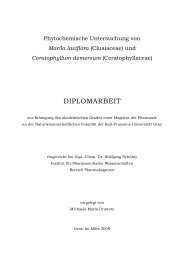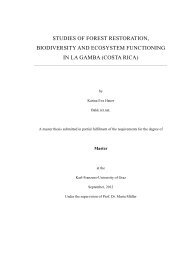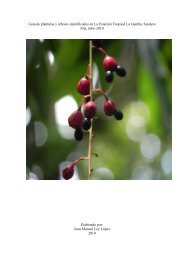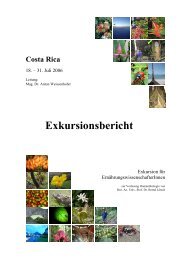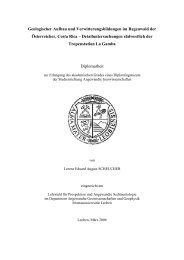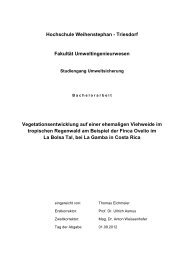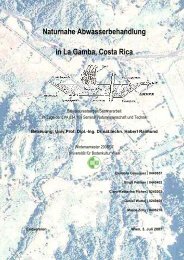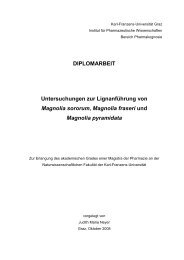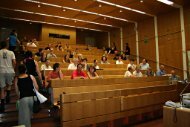Leaf colour patterns, vegetative and sexual reproduction of Episcia ...
Leaf colour patterns, vegetative and sexual reproduction of Episcia ...
Leaf colour patterns, vegetative and sexual reproduction of Episcia ...
You also want an ePaper? Increase the reach of your titles
YUMPU automatically turns print PDFs into web optimized ePapers that Google loves.
Discussion: A fruit set <strong>of</strong> 19% seems quite low with regard to the fruit set <strong>of</strong> Paraboa rufescens<br />
(Gesneriaceae) <strong>of</strong> about 40% (Gao et al 2006) <strong>and</strong> the fruit set <strong>of</strong> Cyrt<strong>and</strong>ra gr<strong>and</strong>iflora<br />
(Gesneriaceae) <strong>of</strong> 32-39% (Roel<strong>of</strong>s 1979). Even though no legitimate pollinator could be<br />
observed, pollination did occur without a doubt. The only regular visitor was a species <strong>of</strong><br />
Meliponinae. Due to SanMartin-Gajardo & Sazima (2004) pollen collectors can act as pollinators<br />
even if they are not the legitimate pollinator. Either the pollinator just could not be encountered<br />
during the observation period or it was deterred by the presence <strong>of</strong> the observer. However, selfpollination<br />
can be excluded to explain the fruit set results (see below in „pollination in the field“).<br />
The observed fruit set is most likely caused by the visitation <strong>of</strong> meliponine bees. The stingless<br />
bee touched the stigma in search <strong>of</strong> pollen <strong>and</strong> thus pollinated the flower in case it had visited a<br />
flower in the male stage before. There are a lot <strong>of</strong> flowers that show a special floral syndrome but<br />
are visited by pollinators that do not fit. Waser <strong>and</strong> Price (1990) quote Delphinium nelsonii as an<br />
example, whose blue asymmetrical flowers conform to a bee syndrome, but attract humming<br />
birds along with hawkmoths, solitary bees, <strong>and</strong> several species <strong>of</strong> bumblebees.<br />
Pollination Experiments<br />
The anatomy <strong>of</strong> the flower as well as proter<strong>and</strong>ry decreases the possibility <strong>of</strong> self-pollination<br />
enormously. Therefore, different pollination experiments were performed to investigate if<br />
spontaneous self-pollination occurs or if manual self-pollination is possible.<br />
Materials <strong>and</strong> Methods: To test spontaneous self-pollination, on the day before the buds<br />
opened they were bagged. The bag remained until the anthesis <strong>of</strong> the flowers had ended.<br />
Afterwards the development <strong>of</strong> fruits was checked <strong>and</strong> documented.<br />
To test self-compatibility, the anthers were cut out from the flower during the male stage.<br />
The anthers were put into a container. On the following day, the pollen was transferred to the<br />
stigma <strong>of</strong> the same flower. From the beginning the flower was covered with a bag to protect it<br />
against flower visitors. After the end <strong>of</strong> the anthesis the bag was removed <strong>and</strong> the following<br />
development was documented <strong>and</strong> photos were taken.<br />
To ensure that cross-pollination (allogamy) is possible, pollen <strong>of</strong> a different flower must be<br />
used for pollination. After the opening <strong>of</strong> the flower the anthers were cut out. Afterwards the<br />
flowers were covered to prevent visits <strong>of</strong> pollinators. During the female stage the stigma was<br />
pollinated with pollen from a different plant. The flower was covered again. In the following days<br />
the fruit set was observed <strong>and</strong> documented.<br />
63



